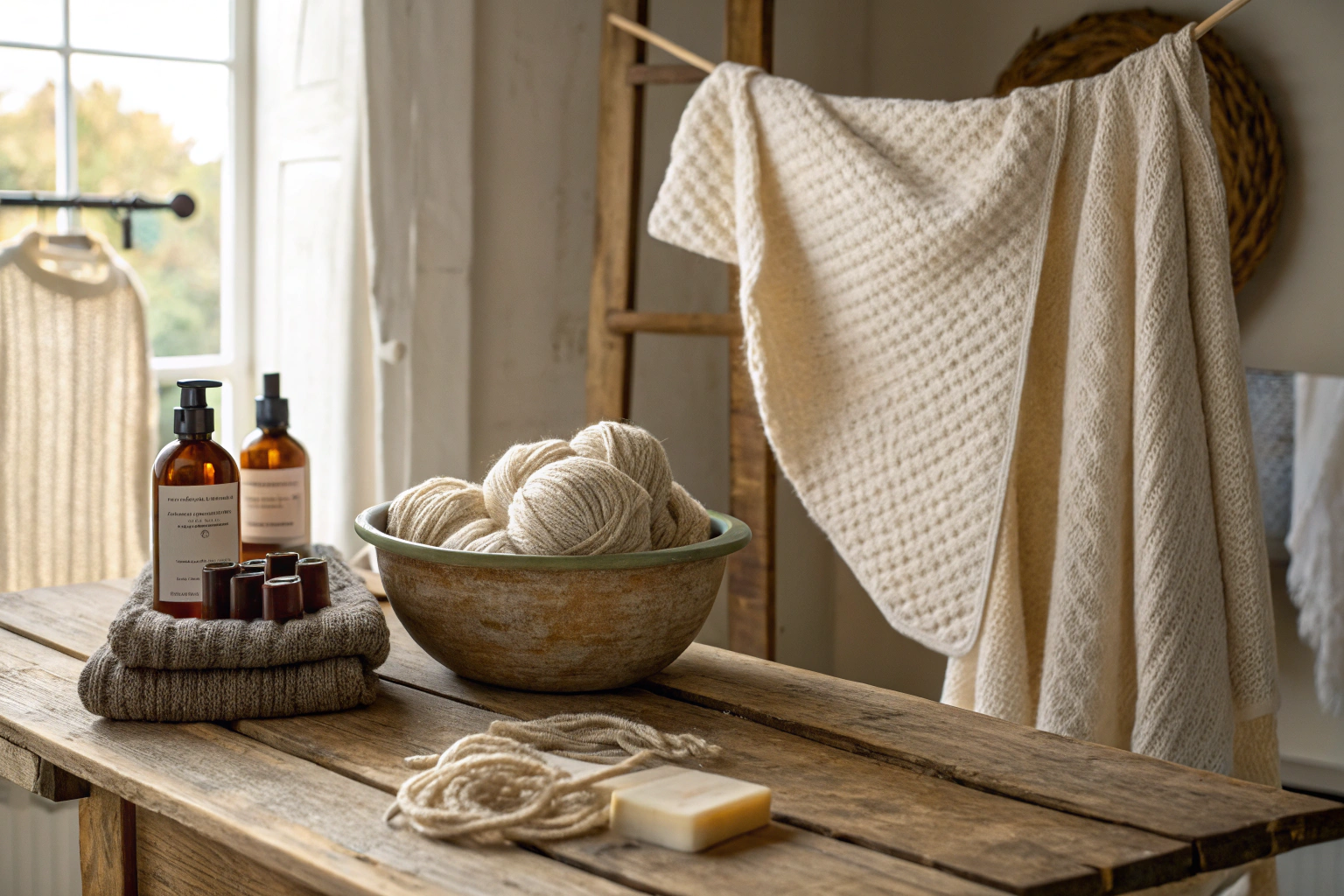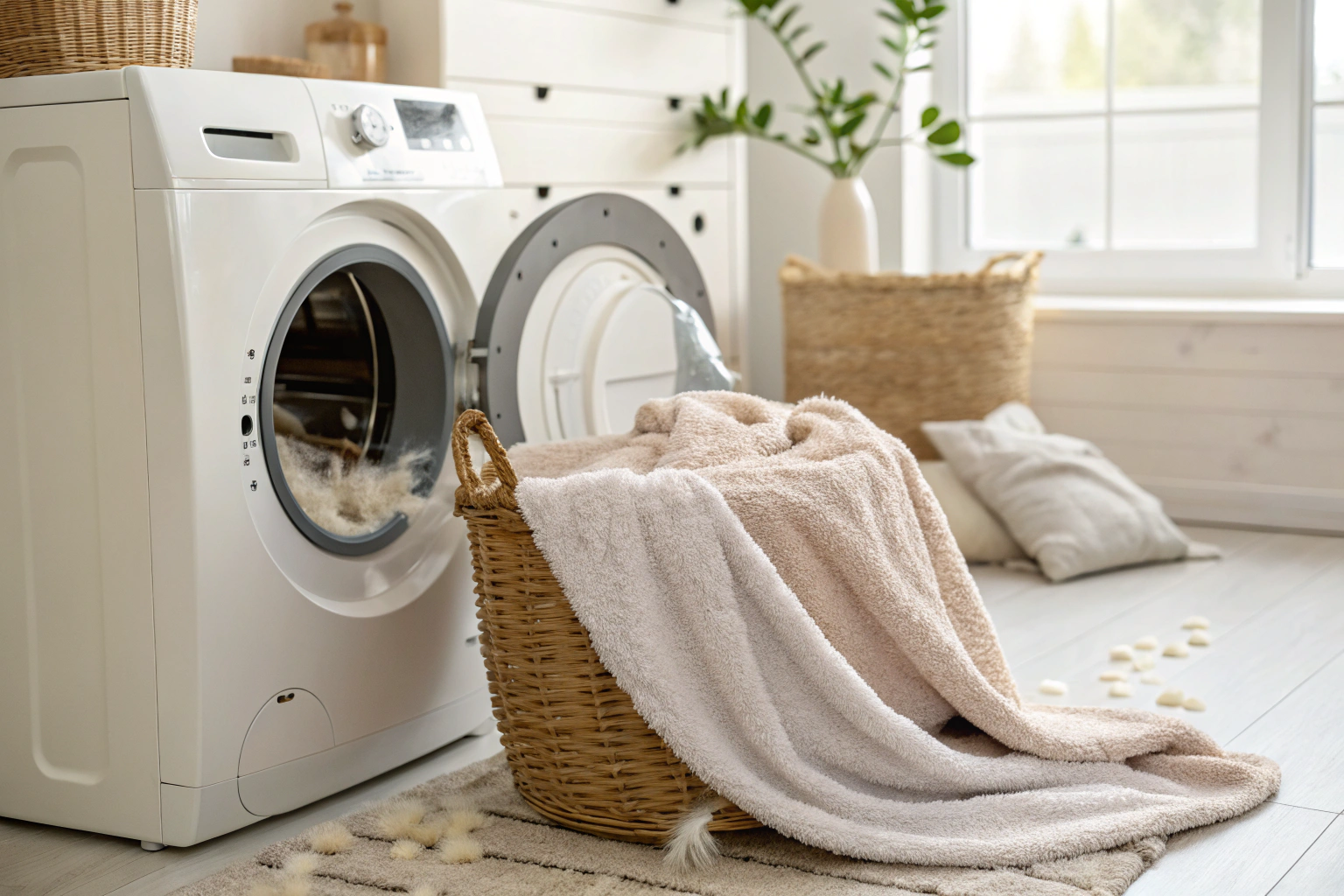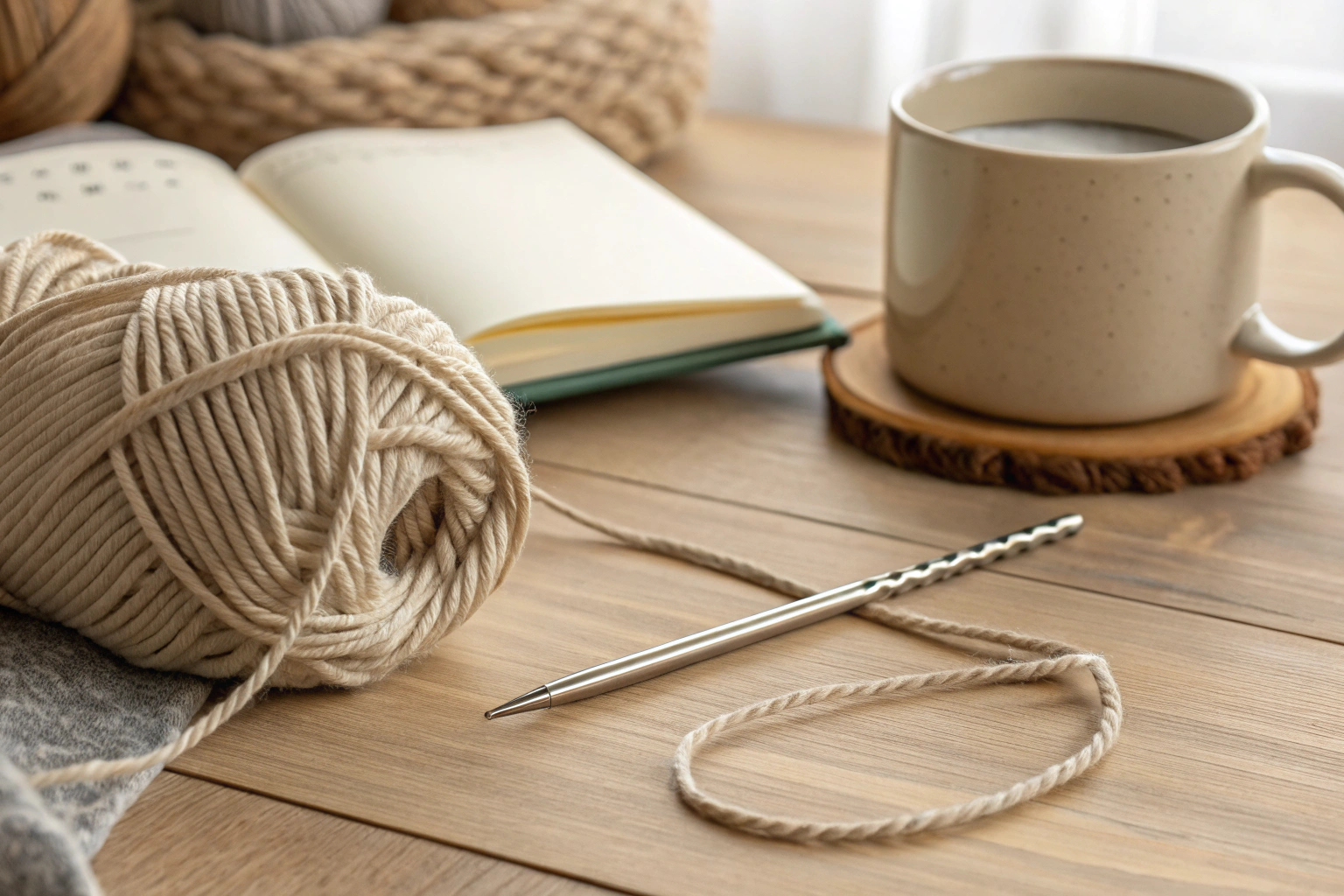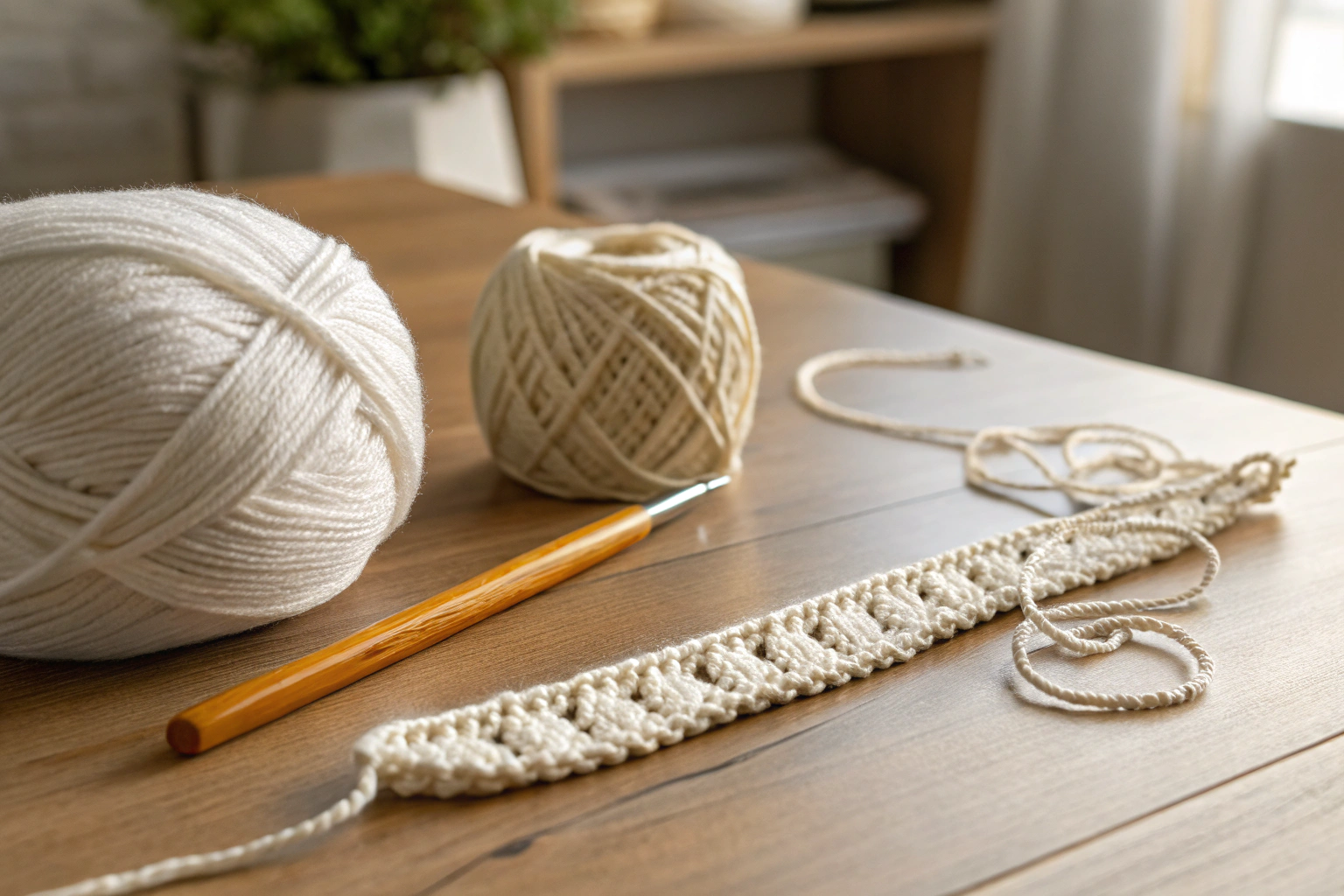How to wash handmade items so they last longer involves using specific, gentle techniques to protect delicate materials and intricate craftsmanship. Proper care prevents common damage like shrinking, color fading, or misshaping that often occurs in a standard machine wash. Following a careful process ensures your unique quilts, knitted garments, and other handcrafted treasures remain in excellent condition for years, preserving both their beauty and sentimental value.
Key Benefits at a Glance
- Preserve Shape & Size: Avoid the dreaded shrinking or stretching of delicate knits and woven fabrics by using cold water and avoiding the harsh agitation of a machine.
- Maintain Vibrant Colors: Gentle washing with a pH-neutral detergent helps prevent sensitive dyes from bleeding or fading, keeping your items looking bright and new.
- Protect Delicate Fibers: Hand washing is the safest method to prevent snags, pilling, and tears in fragile materials like wool, cashmere, silk, and lace.
- Extend Item Lifespan: Proper care is the single best way to ensure your handmade pieces last for decades, saving you money and preserving cherished memories.
- Avoid Harsh Chemicals: Using mild, eco-friendly soaps is not only better for the fabric’s integrity but also gentler on sensitive skin and the environment.
Purpose of this guide
This guide is for anyone who owns and loves handmade items, whether it’s a knitted sweater from a grandparent, a unique quilt, or a piece you crafted yourself. It solves the common problem of anxiety and uncertainty when cleaning a cherished, irreplaceable item. Here, you will learn simple, step-by-step methods for both hand washing and safe machine washing. We’ll cover how to choose the right detergent, proper air-drying techniques to maintain shape, and critical mistakes to avoid, giving you confidence to care for your treasures.
The value of proper care for handmade items
Twenty years ago, a client brought me a handmade wool sweater that had been ruined by a well-meaning family member who tossed it in the washing machine. The beautiful cable-knit pattern was felted beyond recognition, shrunk to half its original size. That moment crystallized my mission: teaching people how to properly care for their treasured handmade pieces. As someone who has worked with handmade textiles for over two decades, I've seen countless beautiful garments destroyed by improper washing techniques. What puzzles me most are the DIY clothing videos where creators spend hours crafting beautiful pieces, only to mention casually that they "just throw them in the wash." These handmade items represent significant emotional and financial investments that deserve specialized care to preserve their beauty and extend their lifespan.
- Proper material identification is the foundation of effective handmade item care
- Pre-washing preparation prevents most damage and extends garment lifespan
- Gentle washing techniques preserve the integrity and beauty of handcrafted pieces
- Correct drying and blocking maintain shape and prevent distortion
- Regular maintenance and proper storage significantly extend item longevity
Understanding what you're working with: material identification
The foundation of proper handmade item care begins with accurately identifying the materials you're working with. Over my years of experience, I've developed a systematic approach to material identification that goes beyond simply reading care labels—which often don't exist on handmade pieces. When I encounter an unknown fabric, I use a combination of visual inspection, tactile assessment, and sometimes a small burn test on a hidden thread to determine fiber content.
Natural fibers like silk require gentle handling—learn how to wash delicate items without damage: How to Wash Silk Pillowcase.
The weight, drape, texture, and sheen of a fabric all provide valuable clues about its composition and care requirements. Natural fibers like wool, cotton, silk, and linen each have distinct characteristics that become second nature to recognize with practice. Understanding these differences is crucial because what works perfectly for cotton can completely destroy wool, and synthetic blends require entirely different approaches than pure natural fibers.
| Material | Key Properties | Care Needs | Common Issues |
|---|---|---|---|
| Wool | Protein fiber, felts when agitated | Cool water, gentle handling | Felting, shrinkage |
| Cotton | Strong, absorbent, can shrink | Warm water acceptable, pre-shrink | Shrinkage, color bleeding |
| Silk | Delicate protein fiber | Cool water, pH neutral detergent | Water spots, color bleeding |
| Linen | Strong but wrinkles easily | Warm water, expect wrinkles | Shrinkage, permanent creasing |
| Acrylic | Synthetic, heat sensitive | Cool water, low heat drying | Pilling, static buildup |
| Polyester Blends | Durable, holds shape | Warm water, quick drying | Oil stains, static |
Natural fibers and their unique needs
Natural fibers require the most careful attention because they're living materials that respond dramatically to water, temperature, and handling. Wool, being a protein fiber, is particularly vulnerable to felting when exposed to agitation, heat, and pH changes. My approach to wool washing involves using cool water, gentle wool-specific detergents, and absolutely no wringing or twisting. I learned this lesson the hard way early in my career when I ruined a client's heirloom Aran sweater by using water that was too warm. Cotton, while more forgiving, still requires attention to prevent shrinkage and color bleeding. I always pre-wash cotton fabrics before sewing to avoid the heartbreak of finished garments that twist off-grain after their first wash. Silk presents its own challenges—I once restored a vintage silk blouse that a client thought was permanently water-spotted by using distilled water and a silk-specific detergent, demonstrating how the right technique can save seemingly hopeless pieces. Linen, despite its reputation for durability, needs careful temperature control to prevent permanent creasing and excessive shrinkage.
“Handmade items should always be hand-washed. Yarns that have been treated and labeled as ‘superwash’ can be washed on a gentle cycle in your machine, but be diligent about using cool water and put items in a laundry bag if you’re afraid of snags. Hand washing should also be done in cool or lukewarm water.”
— Michigan Fine Yarns, January 2024
Source link
Synthetic and blended materials
Synthetic fibers have evolved significantly during my career, and my approach to caring for them has adapted accordingly. While synthetics are generally more durable than natural fibers, they present unique challenges including static buildup, pilling, and oil stain retention. I worked with a complex polyester-wool blend recently that required a hybrid approach—cool water like wool demands, but with the anti-static treatment that synthetics need. Acrylic, which mimics wool's appearance, actually requires gentler handling than many people realize because heat can permanently distort its structure. The key advantage of synthetics is their quick-drying nature and color stability, making them more forgiving for frequent washing. However, they require different stain removal techniques, particularly for oil-based stains that natural fiber treatments won't address effectively.
- Synthetic fibers feel smooth and slippery to the touch
- Polyester blends often have a slight sheen under light
- Acrylic mimics wool but lacks the natural texture variation
- Synthetic materials typically dry faster than natural fibers
- Blended fabrics combine properties of both fiber types
Pre-washing essentials: what to do before the wash
The preparation phase is where I prevent most damage to handmade items. My pre-washing routine, developed over decades of working with delicate pieces, has saved countless garments from disaster. I once rescued a client's handmade quilt that had been stored improperly for years by spending extra time in the preparation phase, identifying weak spots and pre-treating stains before attempting to wash the entire piece. This systematic approach prevents the panic of discovering problems mid-wash when it's too late to address them safely. The importance of prewashing fabric when creating handmade items cannot be overstated—I've seen too many beautifully constructed garments twist and distort after their first wash because the fabric wasn't properly prepared before construction. Taking time for thorough preparation ensures that both the washing process and the final results meet the high standards these handcrafted pieces deserve.
- Examine the entire item for stains, loose threads, or damage
- Check all pockets and remove any items or debris
- Test colorfastness in an inconspicuous area
- Pre-treat any visible stains with appropriate methods
- Secure loose buttons, zippers, or delicate trims
- Turn embellished items inside out for protection
- Select appropriate water temperature and detergent
Spot testing and stain assessment
My golden rule for stain assessment is "when in doubt, test it out." I always perform colorfastness tests in hidden areas like inside seams or under collars before committing to a full wash. This simple step saved a vintage handmade dress when I discovered the red trim would bleed onto the white fabric—a disaster I prevented by adjusting my washing method. For newly dyed items, I use a damp white cloth pressed against the fabric in an inconspicuous area and check for color transfer. My technique involves testing not just for color bleeding, but also for how the fabric responds to moisture, which can reveal shrinkage tendencies or texture changes before they become irreversible problems.
Washing techniques that preserve quality
My washing philosophy centers on the principle that gentleness always trumps convenience when dealing with handmade items. After years of working with textiles, I've learned that the extra time spent on careful washing techniques pays dividends in extended garment life and preserved beauty. I don't wash handmade items after every wear—only when they're actually dirty or have absorbed odors. This selective approach reduces unnecessary wear while maintaining hygiene. My temperature and detergent selection process considers not just the primary fiber content, but also construction methods, age of the piece, and any previous care history. The decision tree I use considers factors like fiber content, construction quality, embellishments, and current condition to determine the safest washing approach for each individual piece.
Hand-washing is safest for knits—especially seed stitch projects where tension and texture must be preserved: Seed Stitch Knit Guide.
Hand washing: the safest approach
Hand washing remains my preferred method for most handmade items because it provides complete control over every aspect of the cleaning process. My technique differs from standard advice in several key ways, developed through years of trial and refinement. I use slightly cooler water than most guides recommend and extend the soaking time to allow gentle cleaning action without mechanical agitation. My detergent preference has evolved to favor Savon de Marseille for natural fibers and specialized wool washes for protein fibers, though I keep commercial gentle detergents for synthetic blends. The pressing and squeezing technique I use removes water without stressing the fibers, and my towel-rolling method for delicate items prevents the stretching that can occur with traditional wringing motions.
- Fill basin with cool to lukewarm water (test temperature with elbow)
- Add gentle detergent and swish to distribute evenly
- Submerge item gently, pressing down to saturate fibers
- Let soak for 10-15 minutes without agitation
- Gently squeeze and press fabric, never wring or twist
- Rinse thoroughly with clean water until soap is removed
- Press out excess water using clean towels
- Lay flat or hang appropriately to air dry
When and how to use a washing machine
Despite my preference for hand washing, I do machine wash certain handmade items when the construction and materials can tolerate it. My criteria for machine washing include sturdy construction, colorfast materials, and synthetic or superwash wool content. Simple cotton knits and well-constructed synthetic garments often benefit from the thorough cleaning that machine washing provides. However, I never machine wash items with beading, sequins, or delicate trims, and I always use mesh laundry bags for added protection. My machine settings are always gentle cycle with reduced spin speed when possible, and I never overload the machine as this increases agitation and potential damage.
- DO: Use mesh laundry bags for delicate items
- DO: Select gentle or delicate cycle only
- DO: Use cool water temperatures
- DO: Reduce spin speed if possible
- DON’T: Machine wash items with beading or sequins
- DON’T: Use fabric softener on handmade items
- DON’T: Overload the machine
- DON’T: Mix colors on first wash
Drying without damage
My stance on machine drying handmade items is absolute: the dryer is evil for these precious pieces. I've witnessed too much damage from well-meaning people who thought "low heat" would be safe, only to discover shrunken, distorted, or damaged garments. My drying setup has evolved over the years to include various tools and techniques that ensure proper shape retention while allowing adequate air circulation. I once rescued a client's misshapen handmade sweater that had been improperly dried by re-wetting it and using proper blocking techniques—a testament to the importance of correct drying methods. The key is supporting the garment's weight and maintaining its intended shape while allowing moisture to evaporate naturally.
“Always turn items inside out, use cold water, and lay them flat to dry to prevent stretching or distortion… Avoid hanging items, as gravity can pull and distort.”
— Locally Handmade, February 2024
Source link
Reshaping and blocking techniques
Blocking is where the magic happens in handmade item care—it's the difference between a professional-looking garment and one that appears homemade in the worst sense. My blocking techniques vary significantly based on fiber content, with wool requiring different approaches than cotton or synthetic fibers. For lace shawls, I use blocking wires and specific pinning patterns that I've developed through years of experience. My blocking setup includes specialized mats, rust-proof pins, and measuring tools, though I always provide alternatives for those without professional equipment. The story of rescuing that misshapen sweater involved careful measurement, strategic pinning, and patience—qualities that every successful blocking project requires.
Special situations: stains, odors, and delicate trims
Complex problems require specialized solutions, and my years of experience have taught me techniques that go far beyond standard laundry advice. I once rescued a heavily stained handmade quilt using a combination of enzyme treatments, careful soaking, and targeted spot cleaning that preserved both the fabric and the intricate quilting. My approach to embellished items involves protecting the decorative elements while still achieving thorough cleaning. Beadwork and embroidery require special handling techniques that I've developed through trial and error, including temporary protective coverings and modified washing motions that clean around delicate elements without disturbing them.
| Problem | Solution | Materials Safe For | Avoid With |
|---|---|---|---|
| Sweat stains | White vinegar soak before washing | Cotton, linen, synthetics | Silk, wool |
| Food stains | Cold water rinse, enzyme detergent | Most materials | Protein fibers with hot water |
| Musty odors | Baking soda overnight, then wash | All materials | None |
| Oil stains | Cornstarch absorption, dish soap | Cotton, synthetics | Delicate silks |
| Blood stains | Hydrogen peroxide on fresh stains | Light colored fabrics | Dark or dyed fabrics |
| Ink stains | Rubbing alcohol dabbing method | Synthetics, cotton | Acetate, silk |
Upcycled and repurposed clothing care
Upcycled garments present unique challenges because their construction often combines different materials and techniques. My experience with these pieces has taught me to approach them with extra caution, as the mixing of fabrics can create unexpected washing complications. I strongly prefer sewn construction over fabric glue for upcycled pieces because adhesives rarely survive repeated washing cycles. I once saved an upcycled denim jacket that was falling apart due to poor construction choices by reinforcing key seams before washing, demonstrating how proper preparation can extend the life of even poorly constructed pieces. My washing techniques for upcycled items involve extra attention to seam integrity and careful monitoring for separation or distortion during the cleaning process.
Overdyeing and color refreshing
When handmade items begin to fade or become discolored, overdyeing can give them new life rather than relegating them to the donation pile. My expertise in color refreshing has saved countless beloved garments that clients thought were beyond help. I prefer fiber-reactive dyes for natural fibers and have had excellent results with Simplicol for synthetic blends. My color compatibility testing process involves small hidden samples to ensure the new color will take evenly and produce the desired result. One memorable project involved overdyeing a client's faded handmade sweater from pale blue to deep navy, completely transforming its appearance while preserving its sentimental value.
Storage solutions that extend lifespan
Proper storage is as crucial as proper washing for maintaining handmade items. My storage philosophy emphasizes breathability, support, and protection from environmental damage. I learned the importance of proper folding techniques after seeing too many stretched-out sweaters that were hung improperly. My method for folding knits follows natural construction lines and prevents stress points that can lead to permanent distortion. Cedar blocks are essential in my storage areas for moth prevention, and I regularly inspect stored items to catch problems early. The storage system I helped one client establish for her collection of vintage handmade textiles has preserved them beautifully for over a decade.
Before storing knitted or sewn items, ensure they’re clean and dry to prevent moth damage—proper prep is half the battle: How to Store Knitted Sweaters to Keep Moths Away.
- Fold knits along natural lines to prevent stretching
- Use padded hangers for structured garments
- Store in breathable cotton bags, not plastic
- Keep cedar blocks in storage areas to deter moths
- Avoid overcrowding to prevent wrinkles and damage
- Check stored items seasonally for any issues
- Store clean items only to prevent stains from setting
Mending and maintenance
Preventive maintenance is far more effective than restorative repair when it comes to handmade items. My philosophy emphasizes catching small problems before they become unwearable disasters. I routinely reinforce high-wear areas on valuable pieces and address loose threads or small holes immediately. My mending techniques often enhance rather than just repair items—I've turned necessary patches into decorative elements and used creative darning to add visual interest to worn areas. The tools I recommend for home mending include quality threads, appropriate needles, and small scissors, along with techniques that anyone can learn with practice.
Common questions about handmade item care
How often should I wash my handmade items? The frequency depends entirely on actual need rather than arbitrary schedules. I wash handmade items only when they're visibly soiled or have absorbed odors. Many pieces can be worn multiple times between washings, especially outer layers and items that don't come into direct contact with skin. Over-washing causes more damage than under-washing for most handmade textiles.
Can I use regular detergent on handmade items? I recommend pH-neutral detergents specifically designed for delicate fabrics. Regular detergents often contain optical brighteners, enzymes, and harsh chemicals that can damage natural fibers or fade colors. Wool-specific detergents are essential for protein fibers, while gentle formulas work well for cotton and synthetic blends.
What water temperature is safest for handmade items? Cool to lukewarm water prevents most damage across all fiber types. Hot water causes shrinkage in natural fibers and can set stains permanently. I test water temperature with my elbow—it should feel neutral, neither warm nor cold.
Should I use fabric softener on handmade items? Never use fabric softener on handmade items. It coats fibers and can interfere with the natural properties of the materials, reduce absorbency, and cause buildup that attracts dirt. The gentle handling techniques I recommend naturally maintain fabric softness.
How do I know if an item is colorfast? Test in an inconspicuous area using a damp white cloth pressed against the fabric. If color transfers to the cloth, the item will bleed during washing and requires special handling or professional cleaning.
Can I speed up the drying process? Never use direct heat sources like radiators or hair dryers. Instead, improve air circulation with fans, choose well-ventilated drying areas, and use absorbent towels to remove excess moisture before air drying.
For broader tips on textile care, the knitting overview provides helpful context, and the CDC clothing hygiene guidance offers additional perspective on garment care.
- How often should I wash handmade items? Only when visibly dirty or after several wears
- Can I use regular detergent? Use gentle, pH-neutral detergents without optical brighteners
- What water temperature is safest? Cool to lukewarm water prevents most damage
- Should I use fabric softener? Never use fabric softener on handmade items
- How do I know if an item is colorfast? Test in hidden area with damp white cloth
- Can I speed up drying? Never use direct heat; use fans for air circulation instead
Conclusion: a stitch in time – preventative care routines
The relationship between proper care and sustainability becomes clearer every year as I watch well-maintained handmade pieces outlast mass-produced garments by decades. My personal collection includes handmade items that are over thirty years old and still beautiful because they've received consistent, appropriate care throughout their lives. The satisfaction I derive from helping others preserve their treasured handmade pieces extends far beyond professional pride—it's about honoring the craftsmanship and love that went into creating these unique items. Preventative care routines, established early and followed consistently, ensure that handmade items remain beautiful, functional, and cherished for generations to come.
Frequently Asked Questions
When learning how to wash handmade clothes, always check the care label or crafting materials used, opting for gentle methods to preserve quality. Use an eco-friendly detergent in cool water to avoid shrinkage or damage, and consider hand washing for delicate items. Dry flat to maintain shape and prevent stretching.
For handmade items, use cold or lukewarm water to prevent fading or felting, especially with natural crafting materials like wool. Avoid hot water as it can cause shrinkage in knits or crochets, and pair it with a gentle cycle if machine washing. An eco-friendly detergent helps maintain the fabric’s integrity without harsh chemicals.
To remove stains from handmade items, gently blot the area with a mild eco-friendly detergent solution, avoiding rubbing to protect the crafting materials. Test any stain remover on a small, inconspicuous area first, and rinse thoroughly with cool water. For stubborn spots, consult the fabric type and consider professional cleaning if unsure.
Dry handmade garments by laying them flat on a clean towel to air dry, reshaping them while damp to retain their form from the original crafting materials. Avoid hanging to prevent stretching, especially for knits, and keep away from direct sunlight to stop fading. If using a dryer, opt for low heat only if the item allows, but air drying is safest.
Wash handmade knits only when necessary, such as after heavy wear or visible soiling, to extend their lifespan from sensitive crafting materials. Spot clean minor stains and air out between uses to reduce washing frequency. Using an eco-friendly detergent during infrequent washes helps preserve the fibers without unnecessary wear.





